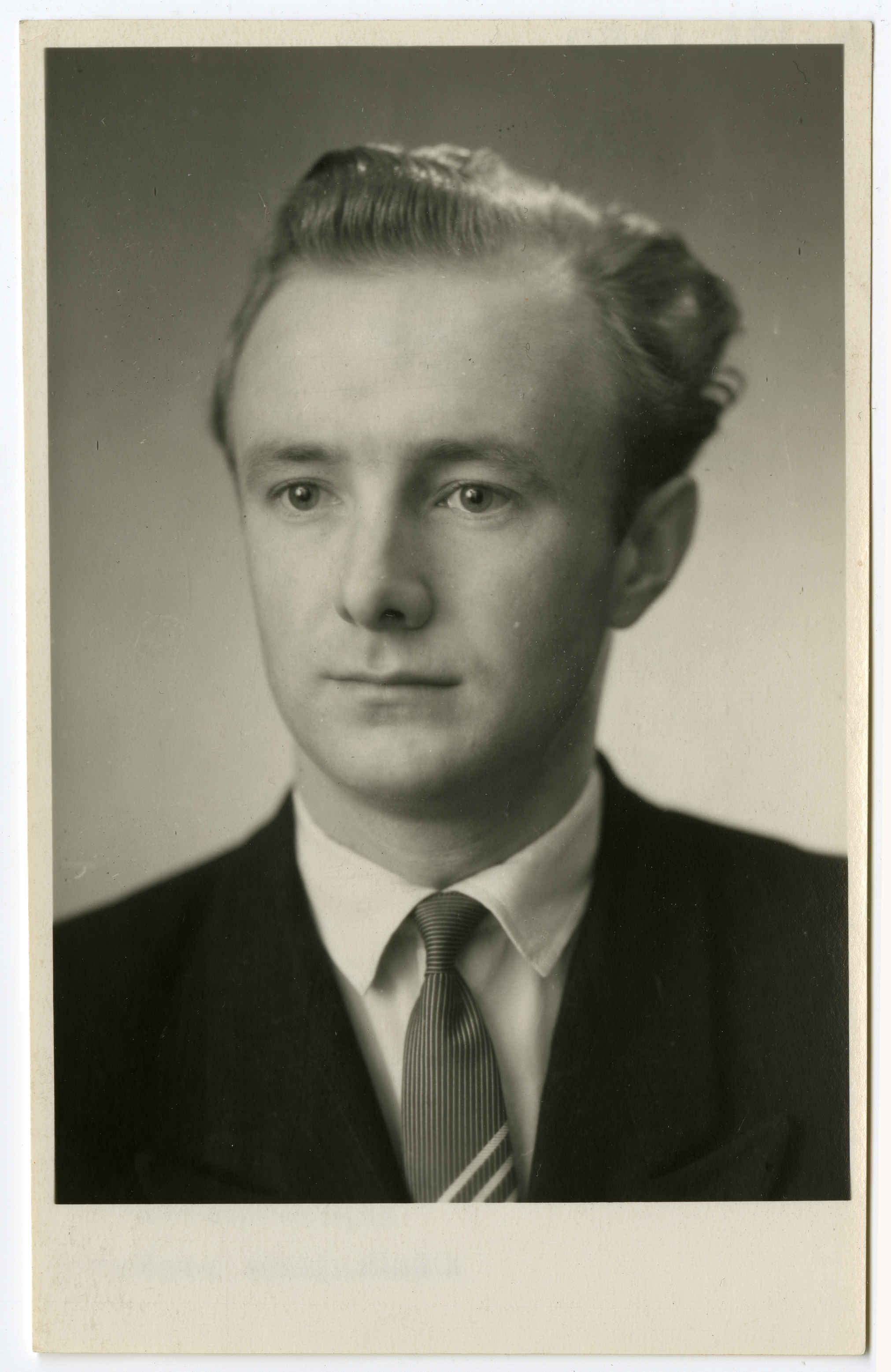
Uno Leies
Uno Leies (6. X 1931 – 13. IX 1988) was a television director, puppeteer and children’s author.
He was born in Narva, attended secondary school in Tallinn and architectural college. In 1954 he graduated from the teaching studio of the Drama Theatre. He worked as a construction technician and actor at the ESSR State Puppet Theatre from 1953 to 1960 and as a director with ETV (Estonian State Television) from 1961. He was a member of the Estonian Theatre Union from 1955, and the Writers’ Union from 1973. He died in Tallinn, and is buried in Metsakalmistu (‘Forest Cemetery’).
Uno Leies is the author of several texts that have become classics of Estonian children’s poetry. His first poem appeared in 1952; his first children’s collection, Harjavars on pikem mehest (‘A Broomstick Is Taller than a Man’), came out in 1963. These were followed by Muti metroo (‘The Mole’s Underground’, 1965), Tillukesi killukesi (‘Tiny Tiddlers’, 1966), Loomade olümpiaad (‘The Animals’ Olympics’, 1968), Kasetohust kaabu (‘The Birchbark Hat’, 1970), Atsi patsid (‘Ats’ Plaits’, 1970), and Kuri muri (‘Angry Doggy’, 1982). The characters in Leies’ benevolent, hearty and simply evocative poems are mostly animals or children. The texts have a characteristic humour, which is used to promote instructive messages. Many of them have been set to music. Probably every Estonian knows Leies’ poem Muti metroo.
He has also written plays for marionettes, which appeared in the collection Lõbus nukupere (‘The Merry Puppet Family’, 1971). He was the director of several series that have become classics of Estonian children’s TV-broadcasting, such as Tipp ja Täpp (‘Tip and Tap’, 1965-1981), Hunt Kriimsilm (‘Wolf-eye’, 1968-1987), and Tammetõru seiklused (‘Acorn’s Adventures’, 1988). As in the poetry for children, so also in the puppet-plays and television series one meets lively characters in friendly and humorous situations. Most of the protagonists are animals, such as Wolf-eye, who won great popularity. Through the various situations they encounter, warmth and wisdom are dispensed in a way that is friendly to children without too much didactic tendency.
A. K. (Translated by C. M.)
Books in Estonian
Children’s poetry
Harjavars on pikem mehest. Tallinn: Eesti Riiklik Kirjastus, 1963, 32 lk.
Muti metroo. Tallinn: Eesti Raamat, 1965, 29 lk. [Järgmised trükid: 1993, 2011.]
Tillukesi killukesi. Tallinn: Eesti Raamat, 1966, 24 lk. [2. trükk: 2016, pealkirja all ‘Kurr ja nurr’.]
Loomade olümpiaad. Tallinn: Eesti Raamat, 1968, 40 lk.
Atsi patsid. Tallinn: Eesti Raamat, 1970, 33 lk.
Kasetohust kaabu. Tallinn: Eesti Raamat, 1970, 19 lk.
Kuri muri. Tallinn: Eesti Raamat, 1982, 33 lk.
Hiire auto: luuletused. Tipp ja Täpp: lühijutud. Tallinn: E. Leies, 2001, 159 lk.
Miisu sünnipäev. Koost. E. Leies. Tallinn: TEA kirjastus, 2007, 52 lk.
Sipelgate jalgpall. Tallinn: TEA Kirjastus, 2016, 21 lk.
Stories for children
Tipp ja Täpp: jutustused. Tallinn: Eesti Raamat, 1986, 34 lk.
Hiire auto: luuletused. Tipp ja Täpp: lühijutud. Tallinn: E. Leies, 2001, 159 lk.
Tipp ja Täpp: jutustused ja näidendid nutikatest nukulastest. Tallinn: TEA Kirjastus, 2016, 62 lk.
Plays
Lõbus nukupere: nukunäidendid mudilastele ja nooremale koolieale. Tallinn: Eesti Raamat, 1971, 203 lk.
Tipp ja Täpp: jutustused ja näidendid nutikatest nukulastest. Tallinn: TEA Kirjastus, 2016, 62 lk.



